 |
| ||
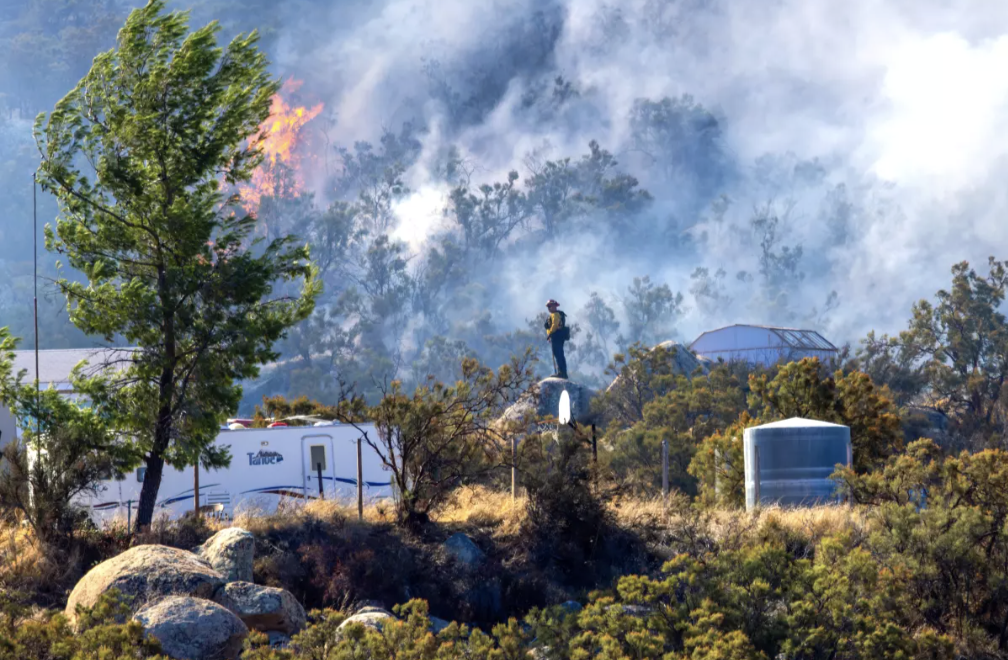 A firefighter standing on a boulder keeps an eye on the Highland fire along Highway 371 on Tuesday in Aguanga, Calif. (Irfan Khan / Los Angeles Times) A firefighter standing on a boulder keeps an eye on the Highland fire along Highway 371 on Tuesday in Aguanga, Calif. (Irfan Khan / Los Angeles Times) |
Good morning. It’s Thursday, Nov. 2. Here’s what you need to know to start your day.
Wildfire grows in Riverside CountyFirefighters in Riverside County are continuing to battle a wildland blaze that led to evacuations and destroyed at least three homes in the Aguanga area. As of Wednesday evening, the Highland fire had burned through 2,487 acres and was 15% contained, according to fire officials. The blaze was reported at about 12:45 p.m. Monday in the area of Highlands Road and Aguanga Ranchos Road and is burning through dry brush and grass in steep terrain near the San Diego County line. It has burned at least 15 structures and destroyed several, some of them homes. More than 1,100 firefighters responded and one person has been injured. The cause of the fire is under investigation. Officials ordered about 4,000 residents in and around Aguanga to evacuate, though some orders were downgraded to evacuation warnings Wednesday afternoon. A smoke advisory was in effect through Thursday morning for portions of Riverside and Orange counties. Philip Gonsalves, a meteorologist with the National Weather Service, told The Times that dry weather conditions in the region are “favorable for fire growth.” And recent plant growth aided by rainfall from summer’s Tropical Storm Hilary could provide prime fuel for the blaze. This week’s fire is a reminder that wildfires remain a year-round reality in the Golden State. California experienced milder fire seasons in 2022 and thus far in 2023 when compared with previous years, but that recent downtick is a small part of an upward trend as wildfires have grown more intense over the last few decades, according to researchers. Data from CalFire show that this year through Oct. 30, 6,375 wildland fires have been sparked in the state, burning a collective 315,599 acres. That’s roughly 200 fewer fires than occurred in the same time period last year, but more acres have burned this year compared with 2022. The five-year average for acres burned in that same year-to-date time period is more than 1.5 million. In August, I spoke with Glen MacDonald, a geology professor at UCLA and a co-investigator of the Department of the Interior’s Southwest Climate Adaptation Science Center, who explained that California’s fire season is steadily creeping into fall and winter in a way it has not historically. How these last few months of 2023 turn out depends on how soon this new water year gets watery. “If you look at some of your really big fires, they’re late in the fall and they can burn right into the next year,” MacDonald told me. “We’ve got plenty of time to dry these fuels further if we don’t get precipitation in the fall.” If you haven’t seen it, The Times maintains a map tracking the progress of wildfires currently burning in California. You can explore it here. Today’s top stories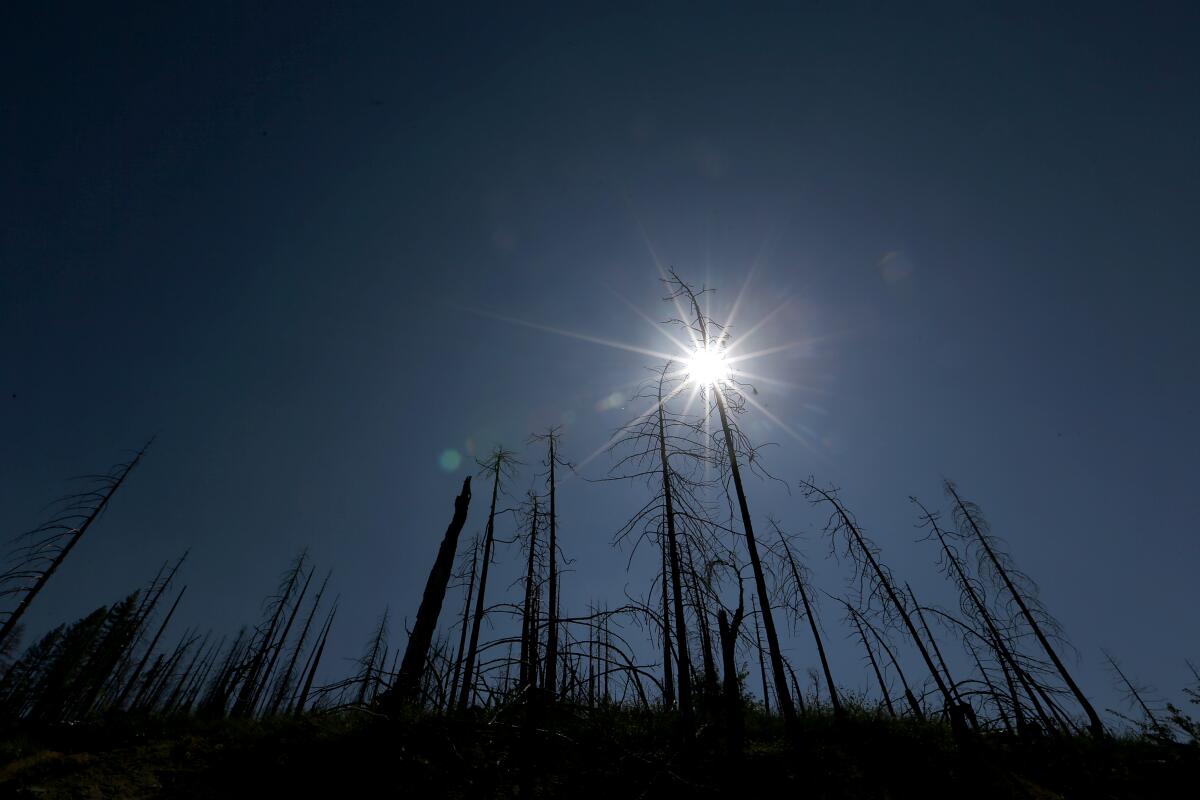 Trees burned by wildfire in the Sierra Nevada, where about a fifth of all conifer forests have become “zombie forests,” still standing but struggling to survive in the warming climate, scientists at Stanford University say. (Luis Sinco / Los Angeles Times) Climate and environment
Business
More big stories
Get unlimited access to the Los Angeles Times. Subscribe here. Commentary and opinions
Today’s great reads A photo collage showing Eric Clapton, Roger Waters and Van Morrison (Ross May / Los Angeles Times; photos by Robert Gauthier / Los Angeles Times; Gareth Cattermole / Getty Images; Chris Pizzello / AP) The unmasking of the narcissistic, conspiracy-spreading baby-boomer rock star. Eric Clapton supports Robert F. Kennedy Jr. Van Morrison? Anti-vaxxer. Roger Waters? Accused of antisemitism. Are boomers OK? Other great reads
How can we make this newsletter more useful? Send comments to essentialcalifornia@latimes.com. For your downtime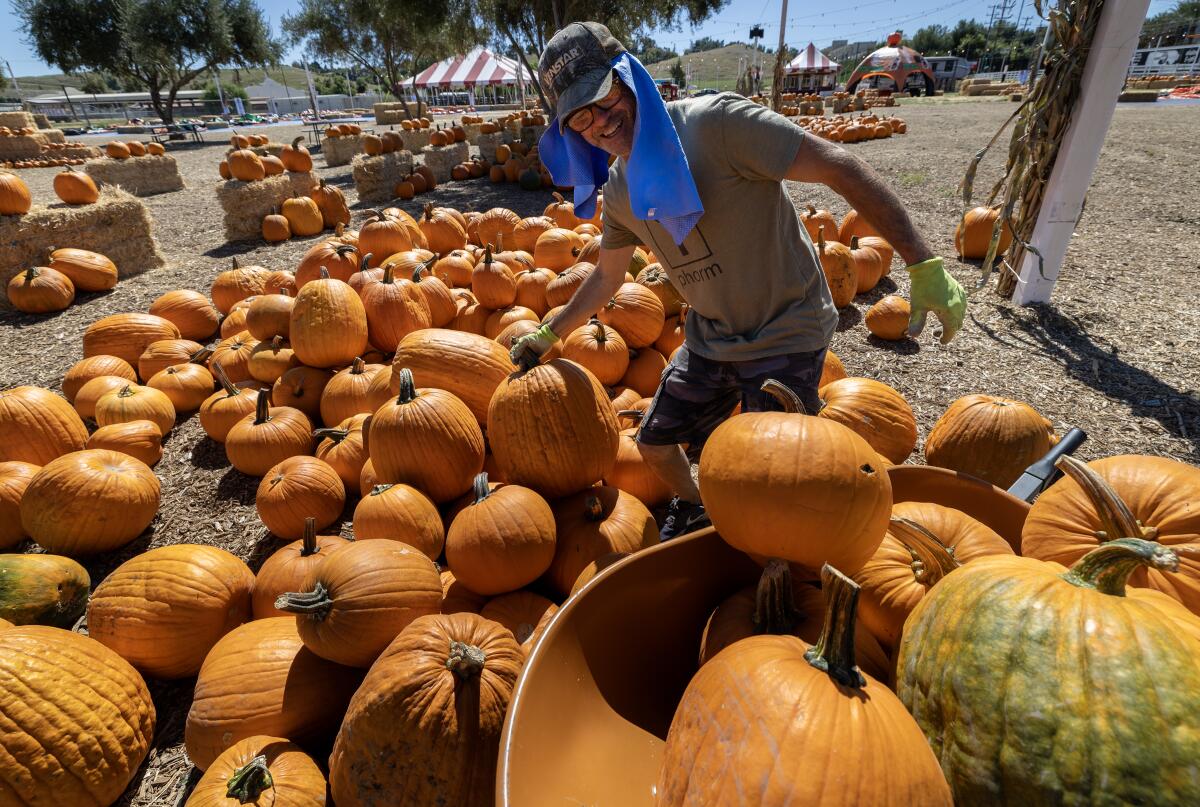 Don’t trash your jack-o’-lanterns. Instead, toss them into the green bin along with your food scraps so it can be turned into compost. (Brian van der Brug / Los Angeles Times) Going out
Staying in
And finally ... from our archives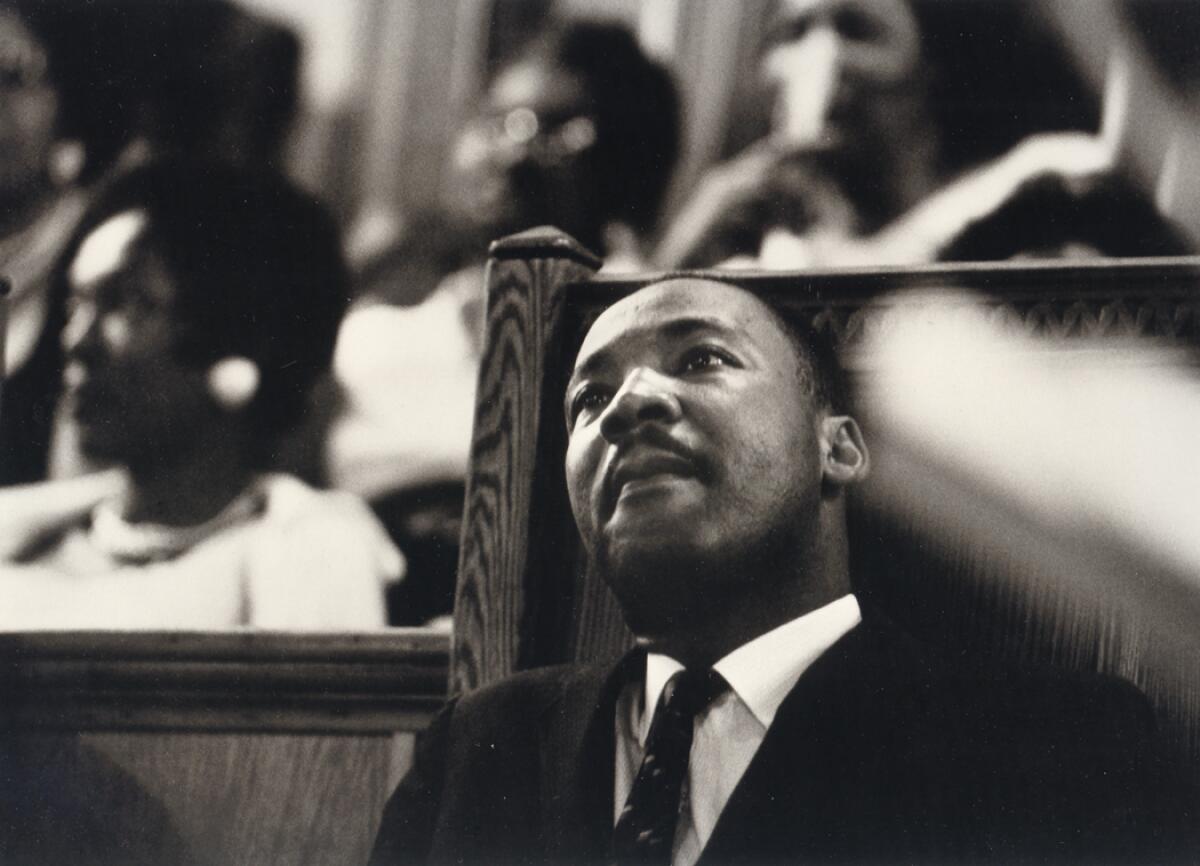 The Rev. Martin Luther King Jr. is shown in 1965. (Steve Schapiro / Fahey/Klein Gallery) On this day 40 years ago, President Ronald Reagan signed a bill designating the third Monday in January a national holiday in memory of Rev. Martin Luther King Jr. Earlier this year, Times essayist Jamil Smith wrote about the fierce opposition to the idea of an MLK Day from the man who eventually made it official, and why the holiday should make you uncomfortable. Have a great day, from the Essential California team Ryan Fonseca, reporter | |||||

No comments:
Post a Comment